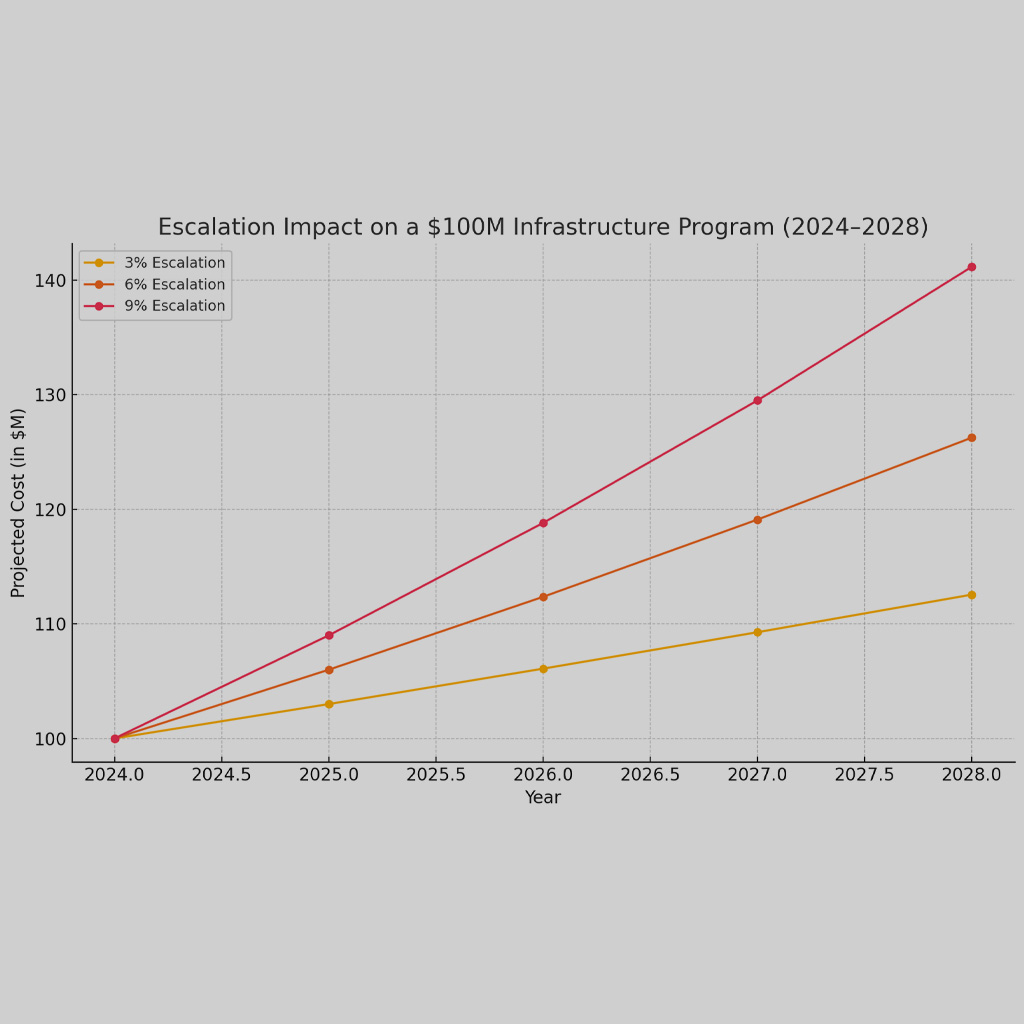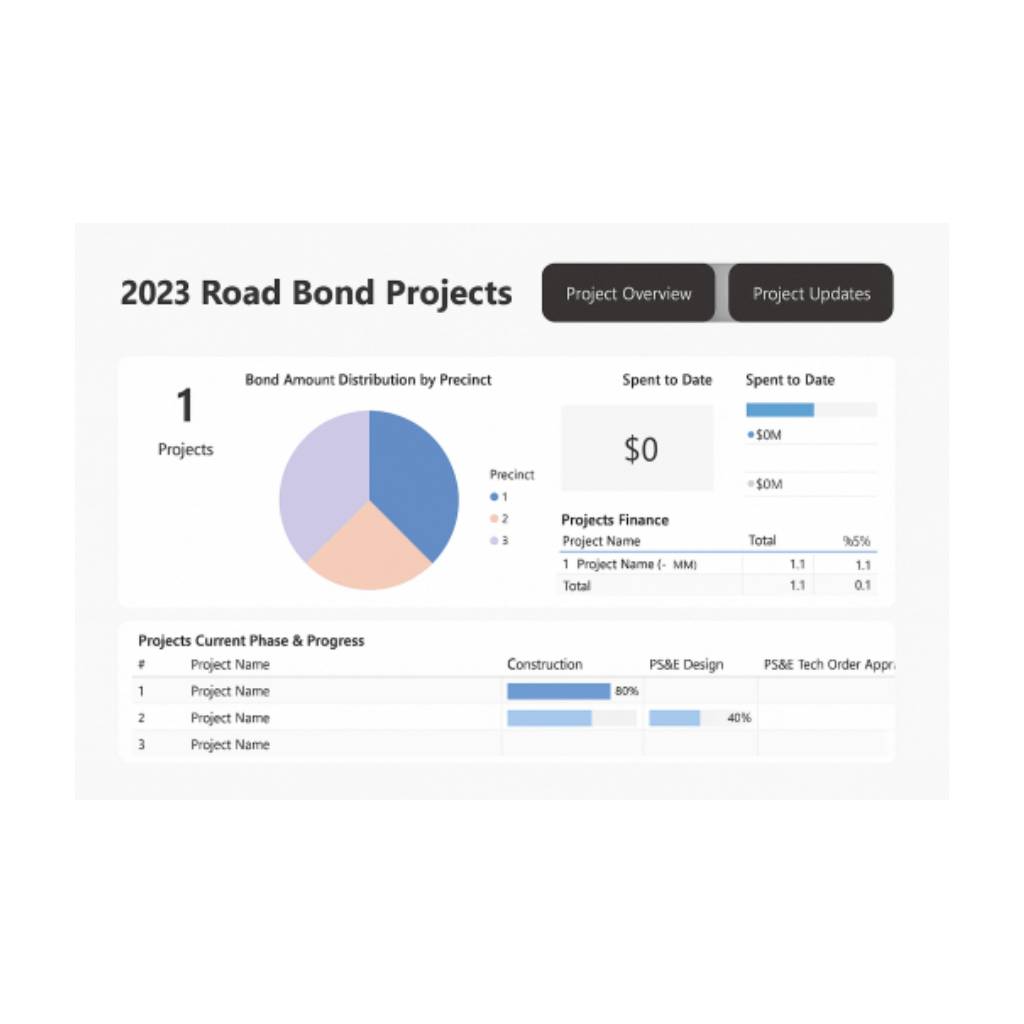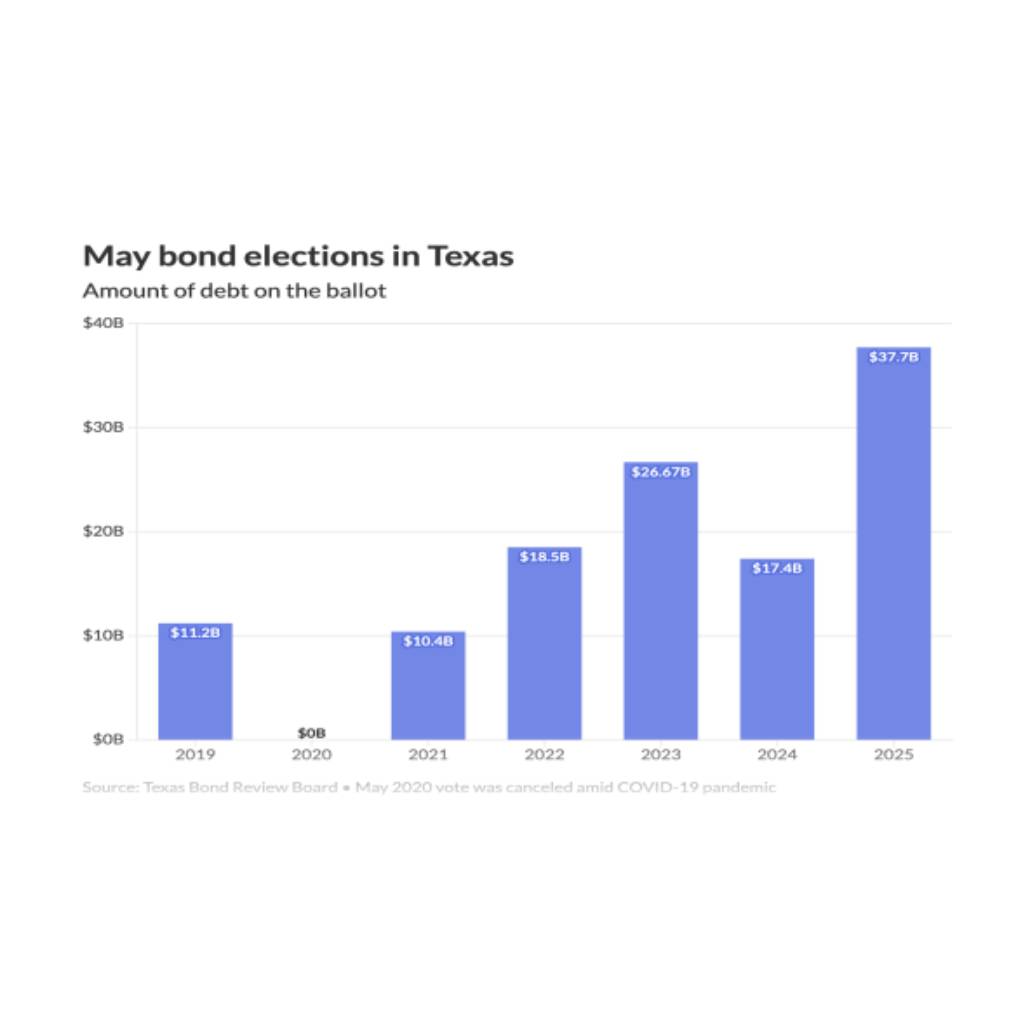Capital improvement projects (CIPs) are investments in the long-term development of an organization’s infrastructure or facilities. These projects often involve significant costs and lengthy timelines, making accurate cost estimation and appropriate contingency planning critical components of the planning process. In this article, we will delve into how often cost estimates should be created during a design process, the appropriate contingency percentages to apply at different stages of design development, and key factors to consider when creating these estimates and contingency amounts, including the impact of rising interest rates and inflation.
Timing of Cost Estimates Throughout the Design Process
Cost estimates should be updated regularly at various stages of the design process, increasing in detail as the project progresses. The general stages where cost estimates should be created are:
- Conceptual Design: At this early stage, the project’s scope and objectives are established, and a high-level cost estimate is created. These estimates are typically rough and should be updated as more information becomes available.
- Schematic Design: This stage involves developing preliminary design concepts, with cost estimates being refined based on the selected design options. The estimate should be updated regularly to reflect changes in scope or assumptions.
- Design Development: As the design becomes more detailed, cost estimates should be updated to reflect these additional details. This stage may require multiple revisions, with each iteration resulting in a more accurate estimate.
- Construction Documents: At this stage, the design is finalized, and detailed construction documents are prepared. Cost estimates should be updated to account for any final changes in scope or specifications.
- Construction: Throughout the construction process, cost estimates should be reviewed and adjusted as necessary to account for changes in scope, market conditions, or other unforeseen factors.
Contingency Percentages at Different Stages of Design Development
Contingency amounts serve as a financial buffer to account for uncertainties and potential cost overruns. The appropriate contingency percentage will vary depending on the level of design development and the specific risks associated with the project. Generally, these percentages can be applied at different stages of the design process:
- Conceptual Design: 20-30%
- Schematic Design: 15-25%
- Design Development: 10-20%
- Construction Documents: 5-10%
- Construction: 3-5%
It is important to note that these percentages are approximate and should be tailored to the unique characteristics and risks of each project.
Factors to Consider When Creating Cost Estimates and Contingency Amounts
When developing cost estimates and contingency amounts, several factors should be taken into account to ensure accuracy:
- Project Complexity: More complex projects generally require higher contingency percentages to account for the increased potential for unforeseen challenges.
- Market Conditions: Fluctuating material and labor costs, rising interest rates, and inflation can have a significant impact on project costs, so it is essential to consider current market conditions when developing cost estimates.
- Project Schedule: The length of the project timeline can impact the potential for cost overruns. Longer projects may require higher contingency amounts to account for unforeseen delays or market fluctuations.
- Quality of Information: The accuracy of cost estimates is heavily dependent on the quality of the information available. As the design process progresses and more detailed information becomes available, cost estimates should become more accurate, and contingency amounts can be reduced.
- Risk Management: Identify and assess the project’s unique risks to determine the appropriate level of contingency. This process should be ongoing throughout the project lifecycle, with contingency amounts adjusted as risks are mitigated or new risks are identified.
The Impact of Rising Interest Rates and Inflation on Cost Contingency Considerations
Market conditions, such as rising interest rates and inflation, significantly influence cost contingency considerations in capital improvement projects.
- Rising Interest Rates: Higher interest rates lead to increased financing costs, which can affect project budgets, viability, and schedules. Project managers should monitor interest rate trends, reassess project feasibility, and adjust contingency amounts accordingly. Furthermore, the choice of financing instruments should be carefully considered, with options such as fixed-rate loans providing some protection against interest rate fluctuations.
- Rising Inflation: Inflation impacts material and labor costs, necessitating adjustments to cost estimates and contingency planning. Project managers should consider escalation clauses in contracts with suppliers and contractors to mitigate inflation’s impact and account for currency fluctuations in international projects. Moreover, cost estimates should be regularly updated to incorporate the latest inflation data, allowing for more accurate financial planning.
Conclusion
Accurate cost estimation and appropriate contingency management are critical components of the design process for capital improvement projects. By regularly updating cost estimates at key stages throughout the design process, project managers can better anticipate and manage potential cost overruns and other financial risks. Additionally, tailoring contingency percentages to the unique characteristics and risks of each project ensures a more accurate reflection of the true costs associated with the project’s development.
To achieve the best possible outcome, it is crucial for project managers and stakeholders to collaborate closely and maintain open lines of communication. By proactively addressing potential risks, adjusting cost estimates as new information becomes available, and factoring in market conditions, project complexity, project schedule, and the quality of available information, organizations can significantly improve the likelihood of a successful capital improvement project.
Understanding the importance of cost estimation and contingency management in the design process is crucial for the success of capital improvement projects. By implementing a systematic approach to cost estimation and contingency management, project managers can make informed decisions, better allocate resources, and ultimately improve the overall project outcomes. It is essential for organizations to recognize the value of accurate cost estimation and to prioritize these activities throughout the design and construction process to ensure the long-term success and financial sustainability of their capital improvement projects.
At Front Line Advisory Group, we transform Capital Improvement Bond Management through expertise & industry knowledge. We empower clients & maximize tax dollars through Program Management Consulting. Contact us for more info at info@frontlineadvisorygroup.com.













